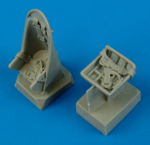The Royal Navy drove the development of aircraft by laying the specifications as the customer. Just as the US, Germany, Japan, etc. drove development by writing specifications for what they desired. I stand by the customer driving development.
My bad on the Swordfish (Outside of the Pacific Ocean.) But in flew in 1934 and i specifically omitted as it predated my 1935 cut-off date. The Sea Hornet? Don't know enough about it. Seafire? No, horrendous non-combat attrition.
'Driving the development' and 'developing' are not same things. Don't know enough about Sea Hornet?
BTW, what was wrong with Skua as a dive bomber - that it was not a biplane like the 1st Helldiver, or that it didn't have fixed U/C lake the later Aichi 'Val'?
Any numbers to back up the claim that Seafire's non-combat attrition was horrendous?
Relating back to my original post, did the UK have the engineering, material, and human resources to allocate to the "Sea Hurricane" from 1938-1940?
The simple answer is there was not enough excess capacity to do the project. Let's look at folding the wings, we need to
...
Where was proven, without the shadow of the doubt, that 'the simple answer' is negative?

